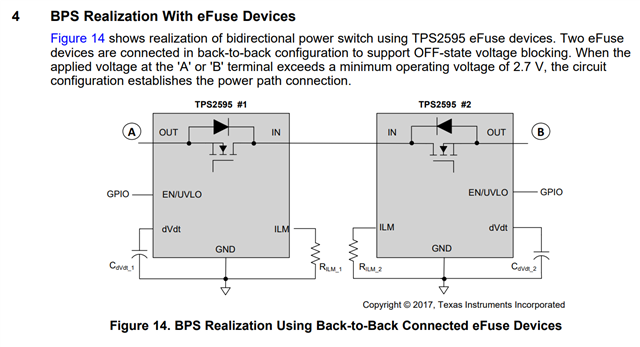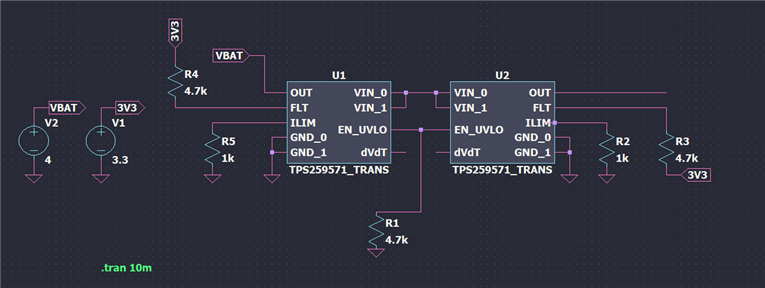Other Parts Discussed in Thread: TPS25948
Tool/software:
I'm facing a similar issue to the one reported in the following thread: TPS2595: High shutdown current observed while using the TPS259573 as a BPS.
I’m implementing the BPS (Bidirectional Power Switch) configuration as shown in Application Note SLVA948 (Figure 14):
https://www.ti.com/lit/an/slva948/slva948.pdf

In my setup:
-
I'm applying 4 V at terminal A (OUT of the first TPS2595)
-
Terminal B (OUT of the second device) is left open
-
Both EN signals are held LOW (devices disabled)
However, I observe a current draw of ~10 mA from the first TPS2595, which is unexpected during shutdown. This causes noticeable heating of the IC even though it is supposed to be off.
Below is a simplified schematic sketch of the implementation (note: I cannot share the full schematic at this time due to restrictions). The dv/dt capacitors are left OPEN.

Questions:
-
Is this current expected due to internal leakage or ESD structures when OUT is supplied and EN = LOW?
-
What is the recommended way to avoid this issue while still implementing a BPS topology using TPS2595?
The mentioned thread seems to be exactly the same issue I'm facing. Does anyone know how this thread was resolved or what the final conclusion was?
Thank you in advance.


